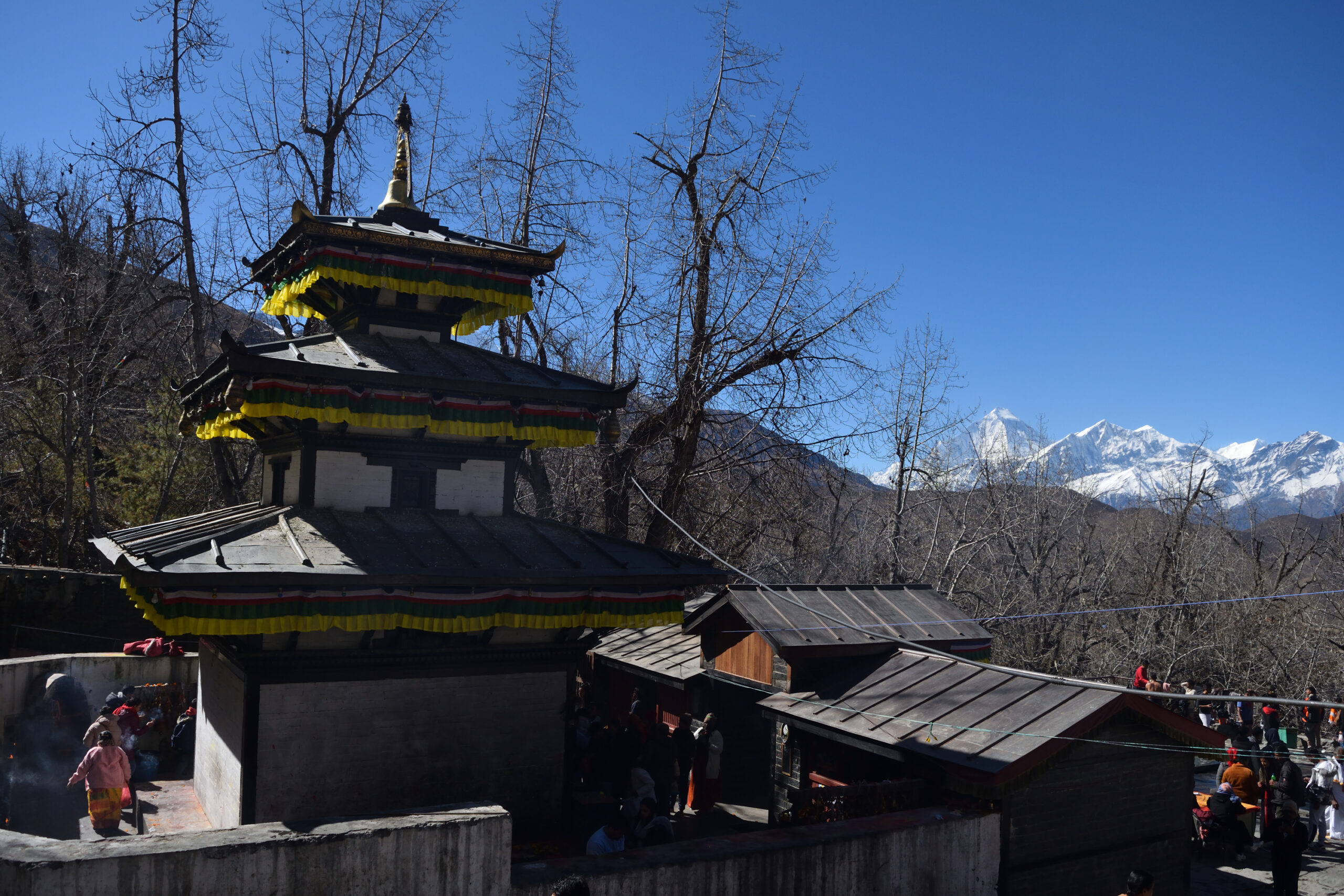Nestled in the heart of the Himalayas, Muktinath is not just a pilgrimage site but a testament to the harmonious blend of spirituality and natural beauty. Located at an altitude of 3,710 meters in the Mustang district of Nepal, this revered temple draws thousands of devotees and tourists each year, seeking both divine blessings and an unforgettable travel experience.
Muktinath, which translates to “place of liberation,” is a sacred site for both Hindus and Buddhists. For Hindus, it is one of the 108 Divya Desams, or holy abodes of Lord Vishnu. The temple houses a golden statue of Vishnu and is believed to grant moksha, or salvation, to those who visit. Buddhists revere Muktinath as the place where the great sage Guru Rinpoche (Padmasambhava) meditated. The eternal flame burning in the temple is considered a symbol of the divine by both faiths, further enriching the site’s spiritual aura.
A visit to Muktinath is not just a religious pilgrimage but also a cultural journey. The temple is surrounded by stunning architecture and traditional Thakali houses. The local Thakali community, known for their hospitality, offers insights into their unique customs and lifestyle. Tourists can enjoy traditional Thakali cuisine, characterized by its flavorful and wholesome dishes.
The trek to Muktinath is an adventure in itself. The journey offers breathtaking views of the Annapurna and Dhaulagiri ranges. The trail passes through the Kali Gandaki Valley, the deepest gorge in the world, adding an element of thrill to the pilgrimage. Along the way, trekkers can explore ancient caves, hot springs, and picturesque villages. The region’s biodiversity is equally captivating, with rare flora and fauna dotting the landscape.
For adventure seekers, Muktinath is a gateway to some of Nepal’s most popular trekking routes, including the Annapurna Circuit and the Jomsom-Muktinath Trek. These treks provide an exhilarating mix of challenging trails, high-altitude passes, and serene landscapes. The rugged terrain, combined with the spiritual ambiance, creates a unique experience that blends physical exertion with mental rejuvenation.
Muktinath is accessible via various routes. The most popular is the trek from Jomsom, which can be reached by a short flight from Pokhara. From Jomsom, trekkers can either hike or take a jeep to Muktinath. For those preferring a more direct approach, helicopters from Pokhara to Muktinath are also available, offering an aerial view of the majestic Himalayas.
The best time to visit Muktinath is during the spring (March to May) and autumn (September to November) seasons. During these periods, the weather is relatively stable, and the skies are clear, providing unobstructed views of the mountains. The region is also adorned with blooming rhododendrons in spring, adding vibrant colors to the journey.
Weather: Muktinath experiences extreme weather conditions. It is advisable to carry warm clothing, irrespective of the season.
Acclimatization: Given its high altitude, proper acclimatization is essential to avoid altitude sickness. Spend a day or two in Jomsom to adjust.
Permits: Ensure you have the necessary permits, including the Annapurna Conservation Area Permit (ACAP) and the Trekkers’ Information Management System (TIMS) card.
Local Customs: Respect local customs and traditions. Dress modestly and seek permission before photographing people.
Muktinath is more than just a destination; it is a journey that offers spiritual solace, cultural enrichment, and adventurous thrills. Whether you seek divine blessings, cultural insights, or an adrenaline-pumping trek, Muktinath promises an experience that will remain etched in your memory forever. Embark on this sacred adventure and discover the mystical charm of Muktinath, where the divine meets the earth in a breathtaking embrace.






